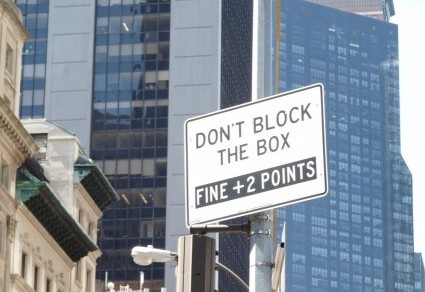The Beatles got “by with a little help” from their friends, and so do I. These signs come from a cadre of alert observers. Presented with thanks, first to Sharon:

How polite to say, “Please do not become alarmed” immediately before asking passengers to “please use the button marked ‘Alarm.'” Nice to know there’s a “telephone ‘if furnished.'” Impossible to decipher, but nice to know.
Now another, courtesy of Jacqueline:

I have never visited that part of the world, but if I ever do, I will be sure to spend “less than tow nights.”
Another, this time from Don:

What’s with the S and its double duty? Labor-saving? Eco-conscious?
Now a menu from another friend via her friend in Madrid, both of whom prefer not to be named:

This one is a little hard to read (in more ways than one!) so I’ll type the most important line: “Salad with all it must have.” That’s how I always prepare salad. Don’t you?
One more, from my friend Marlene: an ad on Craigslist for a “2 year old Teacher on Long Island (Deer Park).” I don’t have an image for this one, but I’ll let you make your own, complete with a toddler, her grade book, and a bunch of chalk. I wonder whether the school offers free diapers to its faculty? Time-outs for tantrums? Bibs?










 I pass this store often, so I can report with confidence that every forklift has a “literature packet” strapped to its vertical shaft. I’ve spent a lot of time speculating about the contents of the “literature packet,” wondering what genres are represented and whether the literature changes with the seasons. This being autumn, I’d choose Frost’s “After Apple-Picking” or “This Is Just to Say” by William Carlos Williams, possibly the best poem ever written about food larceny. (It’s the one where the speaker confesses that he has “eaten the plums” that someone was “probably saving for breakfast.”) Or maybe the packet contains the script of “Babette’s Feast” or the Christmas dinner scene from Great Expectations. Yes, I know, the “literature” is probably operating instructions, but a grammarian can dream, can’t she?
I pass this store often, so I can report with confidence that every forklift has a “literature packet” strapped to its vertical shaft. I’ve spent a lot of time speculating about the contents of the “literature packet,” wondering what genres are represented and whether the literature changes with the seasons. This being autumn, I’d choose Frost’s “After Apple-Picking” or “This Is Just to Say” by William Carlos Williams, possibly the best poem ever written about food larceny. (It’s the one where the speaker confesses that he has “eaten the plums” that someone was “probably saving for breakfast.”) Or maybe the packet contains the script of “Babette’s Feast” or the Christmas dinner scene from Great Expectations. Yes, I know, the “literature” is probably operating instructions, but a grammarian can dream, can’t she? According to the dictionary, a “drove” is “a herd or flock” or “a large mass of people acting in unison.” Therefore, “Zimbabweans” can turn out in “droves,” but not “Zimbabwe.” Unless a mass of countries with that name somehow didn’t make it onto the map?
According to the dictionary, a “drove” is “a herd or flock” or “a large mass of people acting in unison.” Therefore, “Zimbabweans” can turn out in “droves,” but not “Zimbabwe.” Unless a mass of countries with that name somehow didn’t make it onto the map?








 Somehow “ped” got a period, but “dept” didn’t. Both are abbreviations, “ped” being the shortened form for “pedestrian” and “dept” for “department.” In case you’re wondering (actually, despite the fact that you’re not wondering at all), I should mention that this NYC “dept” isn’t consistent when it comes to punctuation relating to walkers:
Somehow “ped” got a period, but “dept” didn’t. Both are abbreviations, “ped” being the shortened form for “pedestrian” and “dept” for “department.” In case you’re wondering (actually, despite the fact that you’re not wondering at all), I should mention that this NYC “dept” isn’t consistent when it comes to punctuation relating to walkers:

 I understand that consistency is difficult to achieve in, say, a 200-page document. But if you’re working with only two sentences, you ought to be able to spare a period for each or omit the punctuation mark entirely.
I understand that consistency is difficult to achieve in, say, a 200-page document. But if you’re working with only two sentences, you ought to be able to spare a period for each or omit the punctuation mark entirely. Okay, no period at the end of this sentence: I’m used to that. But I can’t find any reason for a comma before the conjunction “or.” For that matter, I can’t find a reason for the text as written. Why not just say “DO NOT FEED BIRDS”? Theories welcome. Punc also.
Okay, no period at the end of this sentence: I’m used to that. But I can’t find any reason for a comma before the conjunction “or.” For that matter, I can’t find a reason for the text as written. Why not just say “DO NOT FEED BIRDS”? Theories welcome. Punc also. I support the plea, the lavatory version of the Golden Rule, but not the pronoun. As the sentence is worded, “it” has to refer to “stalls and sinks.” Those items are clearly plural, and “it” is singular.
I support the plea, the lavatory version of the Golden Rule, but not the pronoun. As the sentence is worded, “it” has to refer to “stalls and sinks.” Those items are clearly plural, and “it” is singular.




